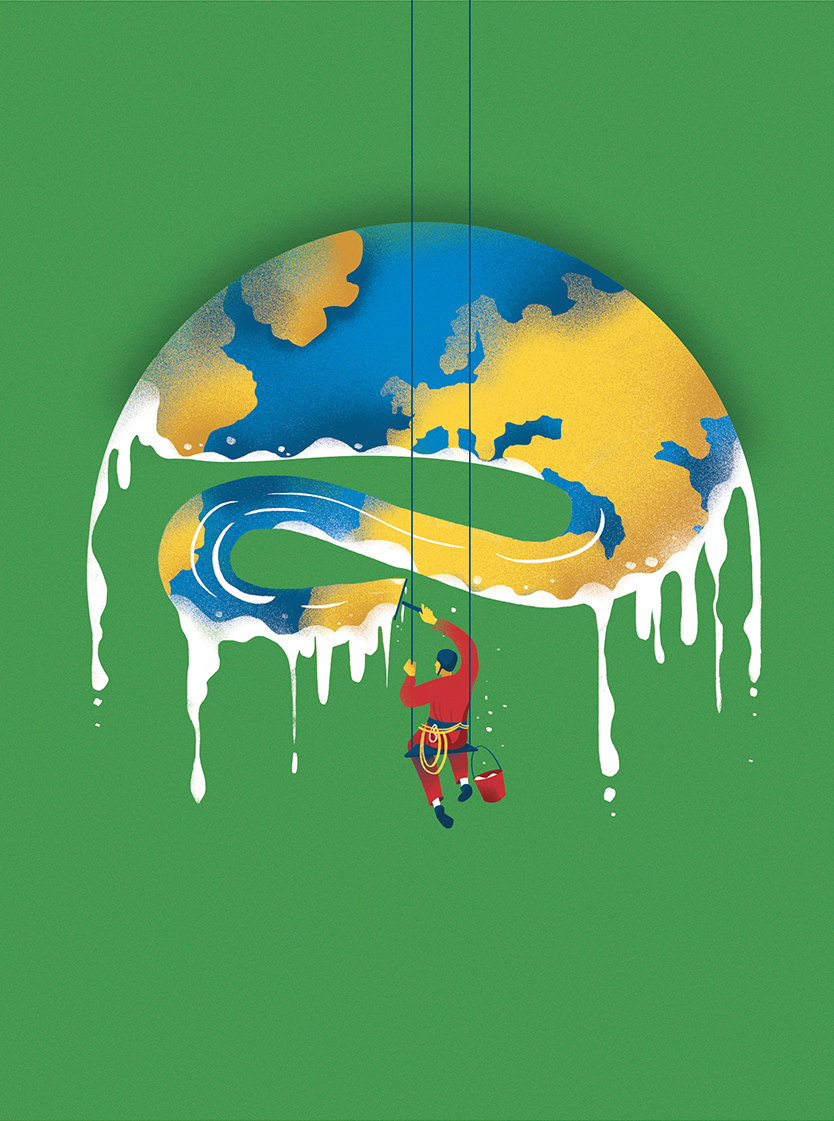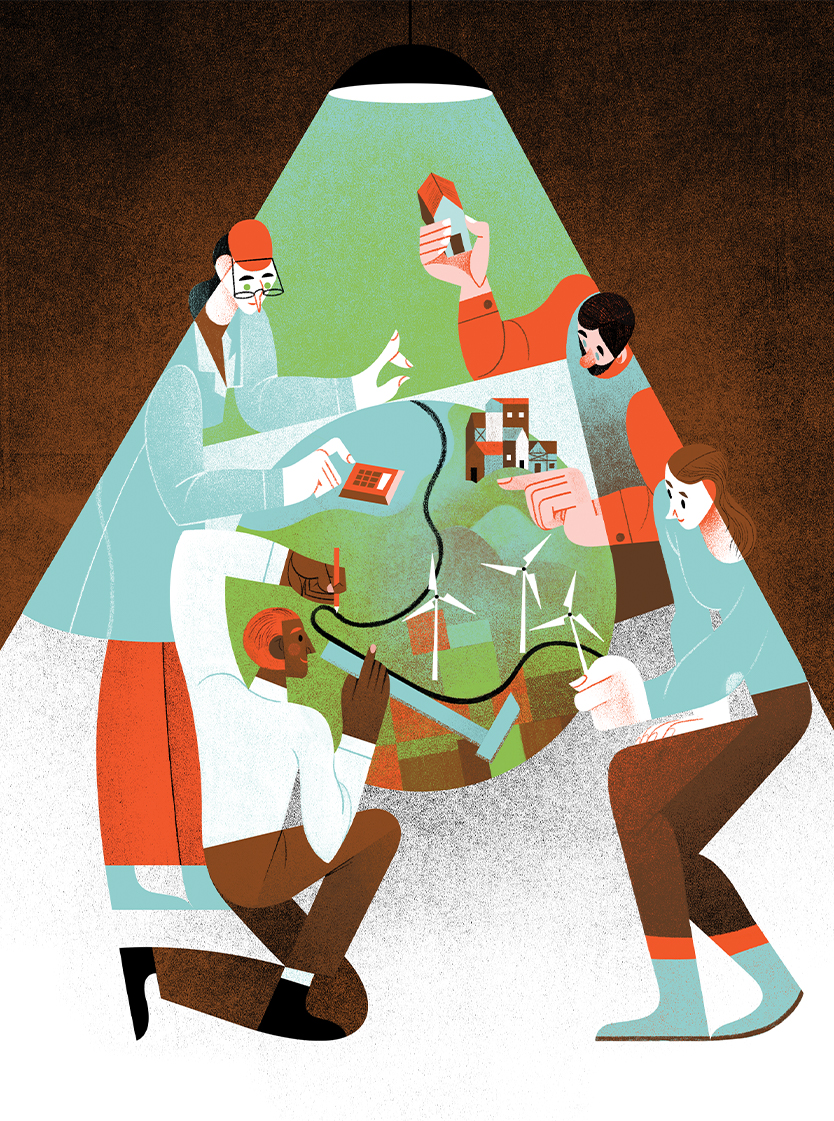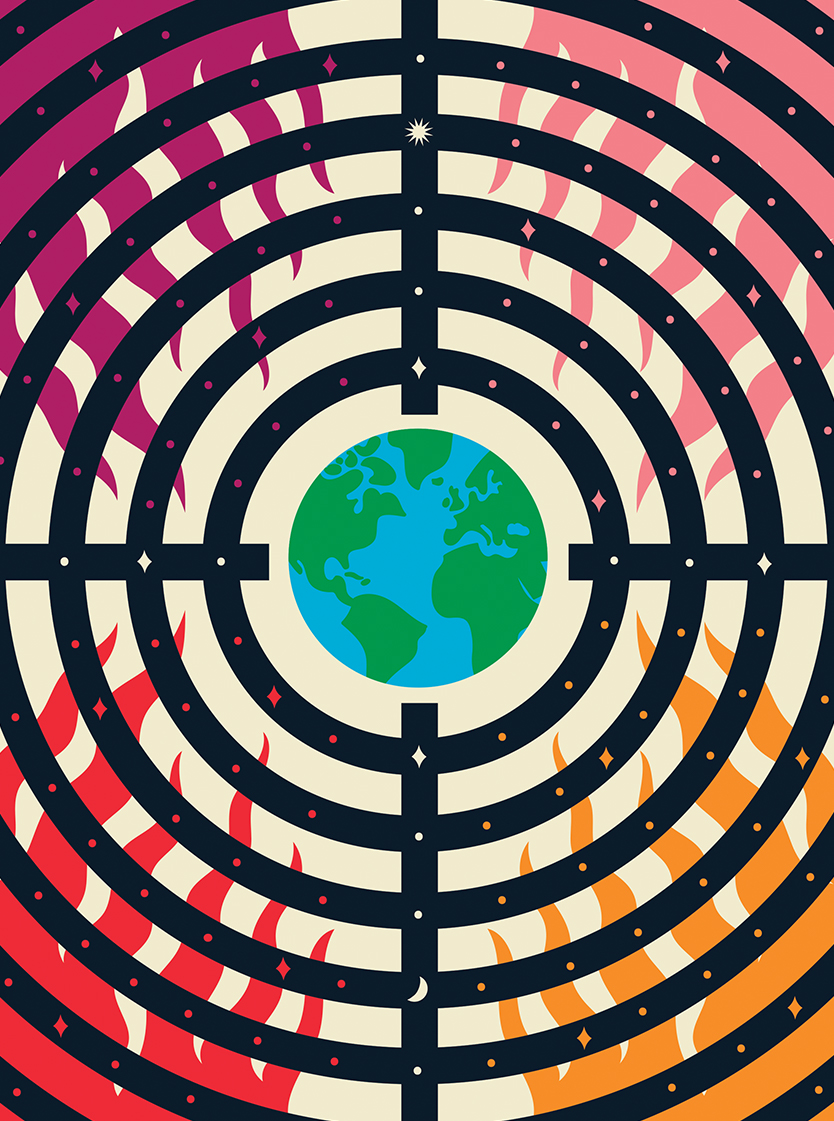The need to live with nature
By Professor Alice Roberts

Illustration Artist

The challenge of the 21st century is to learn to live with nature, and to thrive with the wilderness, not to fight with it, argues professor Alice Roberts, the academic, writer and television broadcaster interested in the structure of humans, how we function, and our place in the wider environment.
Humans exert a profound effect on the physical environment, locally and globally. The conventional view is that anthropogenic climate change began during the Industrial Revolutions of the 18th and 19th centuries. Since then, we’ve been burning fossil fuels in increasing quantities, pushing up the level of carbon dioxide in the atmosphere, and warming the planet.
But our impact on global climate started much earlier, back in the Neolithic. Antarctic ice cores provide a record of ancient levels of carbon dioxide and methane in the atmosphere, and for most of the past 400,000 years the concentrations of these gases has fluctuated in predictable natural cycles.
Then the pattern changed — 8,000 years ago for carbon dioxide, and 5,000 years ago for methane. The levels of these gases began to rise when they should have been dropping. The timings correspond with the beginning of the Neolithic in western and eastern Asia, and with the spread and intensification of agriculture.
The shift from foraging to farming had a profound impact on the landscape, as forests were cleared to make way for fields, and carbon dioxide was released into the atmosphere. This may even have delayed the onset of a glaciation that would otherwise have seen ice sheets descending once more over the Northern Hemisphere. In the ensuing period of climatic stability, our civilisations grew up and flourished. But now we’ve gone too far: we’re not just tinkering with global climate, we’re prodding it hard, and we don’t understand the long-term consequences.
Human-induced, anthropogenic climate change represents a clear and present threat to us, and many other species. But set against that pressing necessity to cut greenhouse gas emissions is the need to feed a whole world full of people.
“We’re not just tinkering with global climate, we’re prodding it hard”
Professor Alice Roberts

We’re currently pushing at the limits of the biosphere to support humans. Some 40 per cent of land is farmed. As our population grows even more, is it possible to balance the world’s food production with the challenge of preserving biodiversity and real wilderness?
Agriculture is responsible for around a third of global greenhouse gas emissions — through clearing of tropical forests, methane emanating from livestock and from microbes in flooded rice fields, and nitrous oxide wafting up from fertilised soil. There are other problems too: more expensive seeds, and a growing emphasis on monoculture and cash crops threaten the livelihoods of poor farmers.
Heavy use of agrochemicals has taken its toll on both human health and wildlife. Changes in land use, together with pesticides, have decimated insect populations. The environmental and health costs of nitrogen contamination from fertilisers are even estimated by some to outweigh the economic gains of agricultural productivity.
Our domesticated livestock — especially large mammals such as cattle, sheep and buffalo — represent a huge burden for the planet. There are over seven billion of us, and around 20 billion of them. We currently feed a third of the plants we grow to these animals, and an increasing volume of cereals is being diverted to feed livestock, making food production even more energy-hungry. We could stop eating meat. At the very least, we could stop eating grain-fed beef and opt for pasture-fed beef instead. Making changes like this would help to make existing food systems more efficient, without pouring in more energy and agrochemicals. Livestock are rightly blamed for a litany of ecological problems, but grazing is not always an unmitigated disaster.

Carefully managed grazing can help to keep environments like grasslands open. Having lost so many species of Pleistocene megafauna at the end of the Ice Age, our domestic megafauna can step into that role: grazing and trampling, and help to sustain communities of plants and animals that thrive in more open environments. Livestock in mixed farming systems can also help to recycle nutrients back into the soil, adding their own natural fertiliser in the form of manure. In some places, rearing animals can be a way of extracting resources from a landscape which is otherwise difficult to farm.
And livestock also represent a source of protein that may be difficult to obtain from plants alone, especially in developing countries. But just how much room do we allow our farms to take up? Adopting an intensive, ‘land-sparing’ approach means accepting the loss of wildlife in our fields, but should allow us to keep more of the wider landscape truly wild. On the face of it, this seems a sensible option.

But ecologists have argued that this doesn’t work in the real world. Wild species can’t be supported in isolated pockets of habitat. Wildlife does better in networks of protected wilderness, semi-natural habitat and managed landscapes. In the UK, natural biodiversity has been profoundly impacted by the intensification of agriculture since the 1960s. Environmentally-friendly farms are essential as both refuges and links, with the hedgerows of traditional farmland forming crucial connecting corridors for wildlife.
Organic farming, though representing only one per cent of agriculture worldwide, supports wild biodiversity, and can be almost as productive as conventional farming, whilst being more profitable. Achieving both food and ecosystem security will involve a range of approaches, in different places. It’s a question which needs to start with a local focus, looking carefully at the communities of plants and animals, the opportunities and pressures, in each place. Our domesticated species are global phenomena alongside us.
Their continued evolutionary success depends a great deal on us. But the success of other species — which have not been sown, grafted, bred and bridled by us — also depends on their ability to survive in a world profoundly influenced by our existence. We need to tend our crops and livestock — but we also need to nurture the untamed wildness — now, more than ever. We can’t plough on with the idea that we can separate ourselves from the rest of nature; we need to learn how to live with it. This is the challenge. Learning how to accept these connections: learning how to thrive with the wilderness, not always to fight it.








